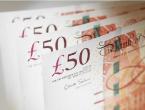Inflation "temporary theory" was rebutted, and the second-in-chief of the Federal Reserve said that the reduction conditions have been "almost met"
The results of the New York Fed’s monthly consumer survey showed that last month’s inflation rate expectations for the next year rose from 5.2% in August to 5.3%, and the median inflation rate expectations for the next three years rose from 4% to 4.2%. Both set the highest record in the eight-year history of the survey. Fed officials do not agree with the "temporary theory" of inflation, expecting prices to rise longer than expected. The Atlanta chairman said that price pressures are increasing, and vice chairman Clarida believes that the reduction conditions have been "almost met."
New York Fed survey: US consumer inflation expectations in September hit a record high
According to a survey by the Federal Reserve Bank of New York, with rising price pressures, US consumers’ inflation expectations continued to rise in September. New York Fed monthly consumer survey results show that last month the year ahead inflation expectations from 5.2% in August to 5.3%, and inflation expectations in the next three years, the value rose to 4.2% from 4%, two Both set the highest record in the eight-year history of the survey .
For the 12 months ending in August, the Fed’s preferred inflation rate indicator was 4.3%, which was far higher than the Fed’s 2% target. Fed officials, including Chairman Powell, attribute the high inflation rate to supply chain bottlenecks and other temporary factors related to the economic restart. They expect the inflation rate to return to about 2% by the end of next year.
However, Fed officials still pay close attention to inflation expectations, because they believe that such expectations are a key factor in determining the actual level of inflation in the future.
Deutsche Bank economists said on Tuesday that the Fed will start raising interest rates in December 2022, which is earlier than previously expected, largely due to the rise in various inflation expectations indicators.
In a press release on Tuesday, the New York Fed pointed out that “long-term (next 5 years) inflation expectations are still as stable as two years ago, that is, before the outbreak.” The bank stated that a recent blog post on its official website contained other data from the survey. .
Clarida, Vice Chairman of the Federal Reserve: The conditions for downsizing have been "almost met"
Fed Vice Chairman Clarida said that in the context of high inflation and the continued re-employment of the job market, the conditions required to begin to reduce the Fed’s bond purchase program have been “almost met”.
"I personally believe that in terms of our price stabilization responsibilities, it has far exceeded the standard of'substantial further progress', while in terms of our employment responsibilities, it has almost met the requirements." Said in a video speech prepared for the annual membership meeting of the Institute of Finance.
The Fed Vice Chairman was referring to the Fed’s guidance issued in December last year, promising to continue to purchase US Treasury bonds and mortgage-backed securities at a rate of $120 billion per month until the economy makes “substantial further progress” in terms of employment and inflation targets. .
At the end of the most recent policy meeting last month, Fed officials had said that downsizing "may be the right move soon." Chairman Powell clarified in a subsequent press conference that he may vote to reduce the speed of debt purchases as early as the next meeting in November.
In the 12 months ending in August, the Fed’s preferred US inflation rate indicator reached 4.3%, which was far higher than the Fed’s 2% target. As the epidemic subsided, Fed officials, including Powell, have attributed the high price pressures to supply chain bottlenecks and other temporary factors related to the reopening of the economy.
Inflation expectations
"I still believe that the potential inflation rate of the U.S. economy is still close to our long-term goal of 2%, so once these relative price adjustments are completed and the bottleneck is eliminated, the unwelcome inflation spike this year will eventually prove to be temporary. "Clarida said.
"Even so, I, like most of my colleagues, believe that the risks facing inflation are upward, and I continue to pay attention to potential inflation trends, especially the indicators for measuring inflation expectations," he added.
In recent months, as the epidemic has slowed hiring in the US job market, the growth rate of the employment population has slowed. According to a report released by the US Department of Labor on Friday, the number of new jobs created in September was only 194,000, which was far lower than the 500,000 expected by the market.
As a Republican, Clarida was nominated by former President Trump to join the Fed in 2018 for a four-year term. He expressed confidence that loose monetary and fiscal policies will eventually restore maximum employment while controlling inflation.
Atlanta Chairman: In favor of reducing the scale of bond issuance, it is expected that the interest rate hike will be more than a year later
Atlanta Chairman Bostic said that this year's inflation rate has lasted longer than policy makers expected, so it is not appropriate to call price increases "temporary."
"'Temporary' is not a good word," Bostic said in an online speech to the Peterson Institute for International Economics on Tuesday. "It is becoming more and more obvious that this kind of rising price pressure caused by severe and widespread supply chain disruptions will not be alleviated quickly. As far as this definition is concerned, inflation is not temporary."
Bostic, who has voting rights on monetary policy this year, supports the Federal Open Market Committee (FOMC) to reduce the size of asset purchases by US$120 billion per month. The plan may be launched at the November meeting. Bostic said that the economic growth and employment recovery in the United States exceeded his expectations.
"I adjusted my forecast in the'dot plot' to reflect faster economic growth, mainly in terms of employment and inflation," Bostic said. "This also allowed me to slightly advance the timing of the rate hike. But I still think that there is at least more than a year before the rate hike."
In the question and answer session, he said that code reduction is unlikely to cause an economic slowdown because the market is functioning well and the US economic problems are more due to supply chain disruptions caused by the epidemic than demand-side factors.
Bostic said in a written speech that he sees inflation is expanding. "I believe that more and more evidence shows that price pressure has exceeded the factors most directly related to supply chain issues or the reopening of the service industry."
Bostic said that indicators of long-term inflation expectations have climbed, and many indicators have reached 10-year highs.
"These upside risks to the inflation outlook deserve close attention," Bostic said. "So far, the indicators do not indicate that long-term inflation expectations have been dangerously out of control. However, the long duration of inflationary pressure may lead to instability of inflation expectations. We will pay close attention to this."











